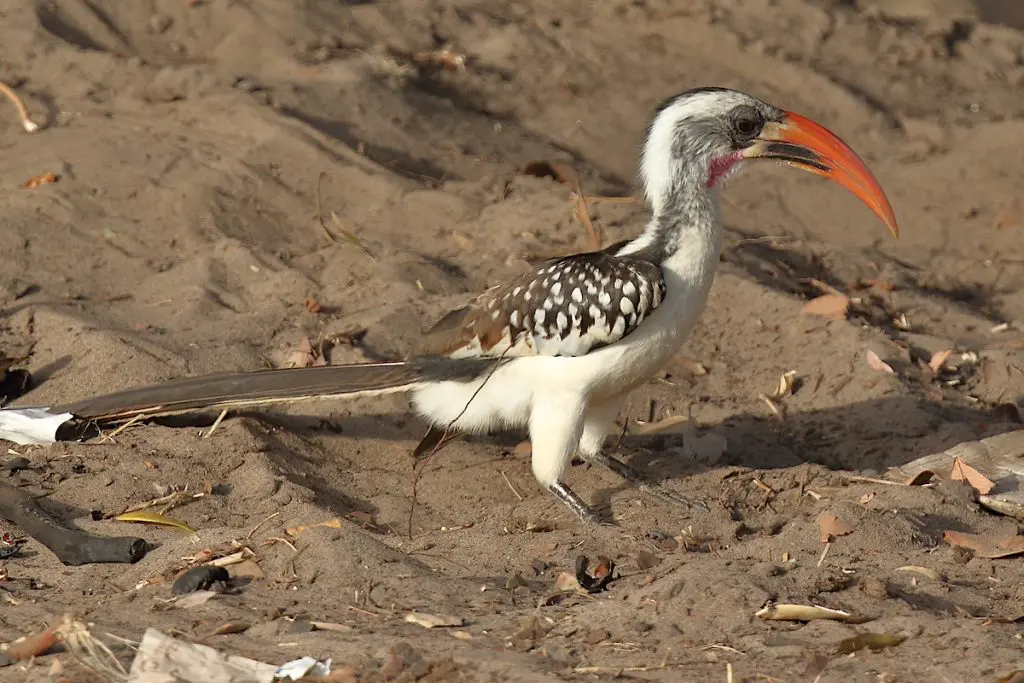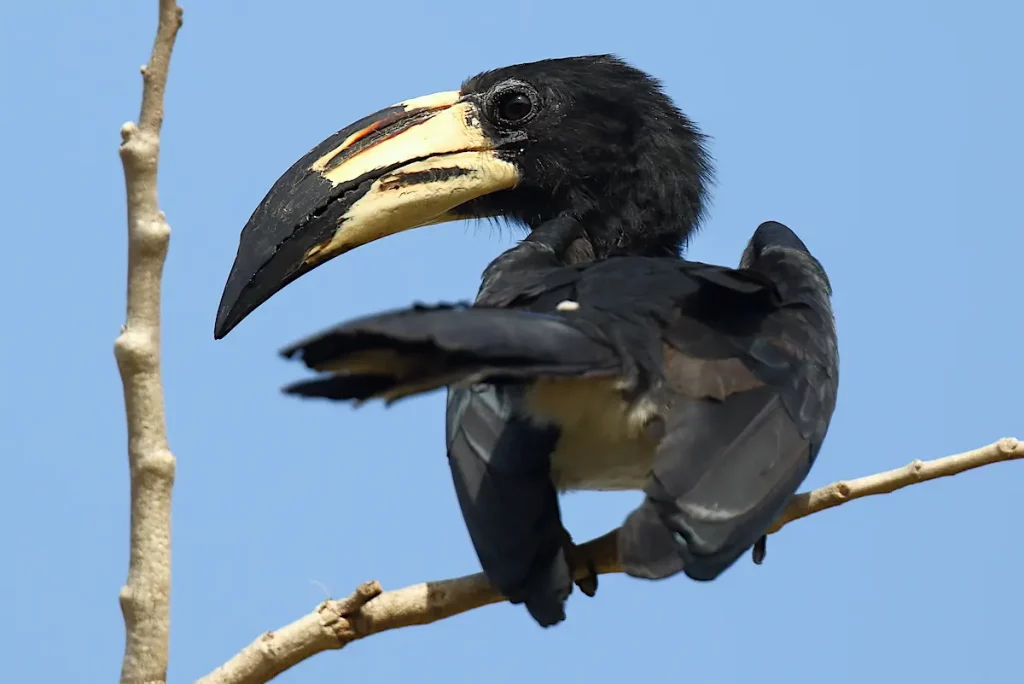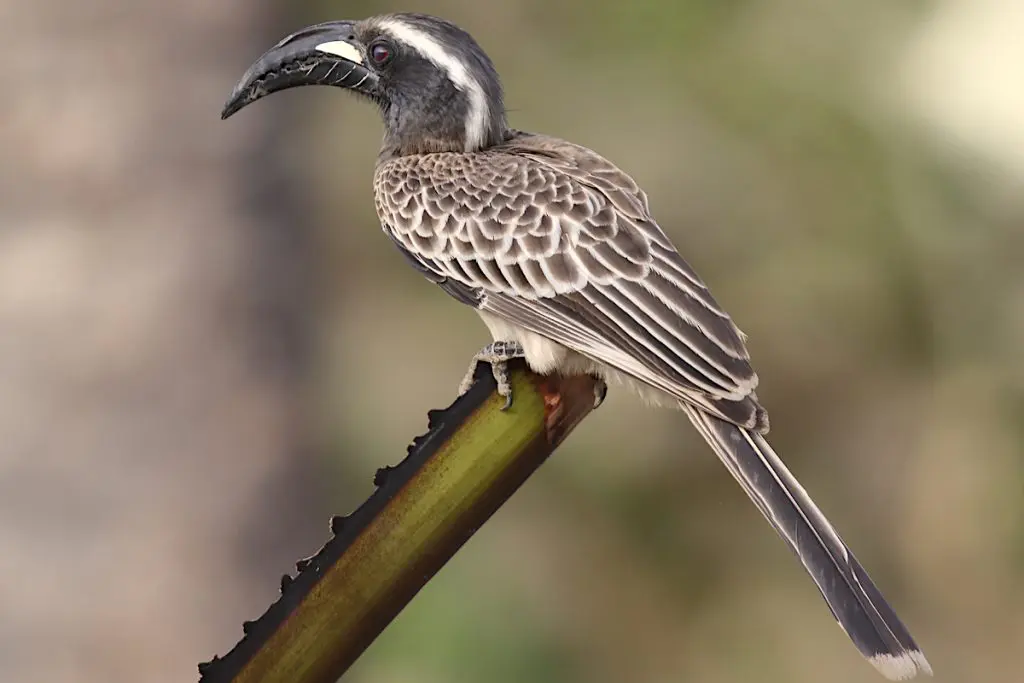Hornbills are named because of the shape of their bills. The Gambia is lucky to have several, three of which we deal with here today. We will talk about The Abbysinnian Ground Hornbill in a separate blogpost😉
Bird information.
Where can we see the Red-billed, African-pied & African-grey Hornbill?
All are found in or around Footsteps and can be seen all over The Gambia in forest habitats.
What do they look like?
Red-billed, This group of conspicuous birds have mainly whitish underparts and heads, grey upperparts, long tails, and a long curved red bill. The sexes are similar, but the female has a smaller bill which lacks a casque (a display growth on the upper mandible of the bill). They are generally large, at 42 centimetres long, but the entire group is considered one of the smaller hornbills. Source Wikipedia
African-pied, African Pied Hornbills measure about 54 cm in length – including the long tail. The plumage is mostly black, except for the white abdomen and tail tip. The long curved black and the yellow bill have a medium-sized casque (a display growth on the upper mandible of the bill). Males and females look alike, but the female has a smaller casque. Juveniles have duller plumage and smaller beaks. They lack the casque of the adults. Source Beauty of Birds
African-grey, At 45–51 cm in length, the African grey hornbill is a large bird, although it is one of the smaller hornbills. Its plumage is grey and brown, with the head, flight feathers and long tail being of a darker shade. There is a white line down each side of the crown and another down the back which is only visible in flight. Their long curved bills feature a small casque (a display growth on the upper mandible of the bill) along the upper culmen, which is more prominent in males than females.
A dark upper mandible with a creamy-yellow mark or horizontal stripe is diagnostic of males, whereas females have tricoloured, red-tipped mandibles. The plumage of the male and female is similar. That of juveniles doesn’t differ much from adults, but their bills are initially uniformly blackish. The flight is undulating. The similarly sized red-billed hornbills occur in similar savannah habitats but have pied plumage. Source Wikipedia
What do Hornbills feed on?
All three hornbills are omnivorous, eating insects, fruit, small rodents and reptiles.
Want to know some interesting Factoids?
There are fifty species of Hornbill. The smallest is the Red-billed dwarf hornbill measuring up to 30 cm and the largest is the Southern-ground hornbill measuring up to 100 cm.
How do they sound?
Red-billed – Its call is a series of clucks that starts with single notes, then becomes louder and more emphatic, with doubled notes. Source Ebird
African-pied – This conspicuous and gregarious bird advertises its presence with its whistling pii-pii-pii-pii. Source Wikipedia
African-grey – Its call is a loud piping pee-o pee-o pee-o Source Beauty of Birds



